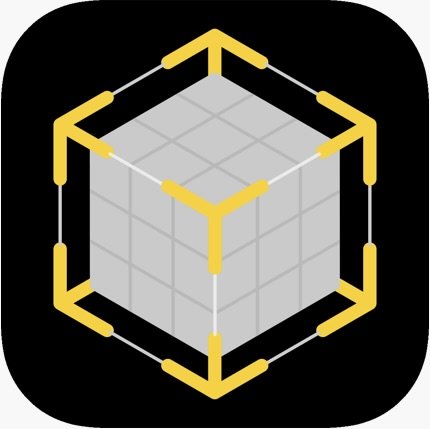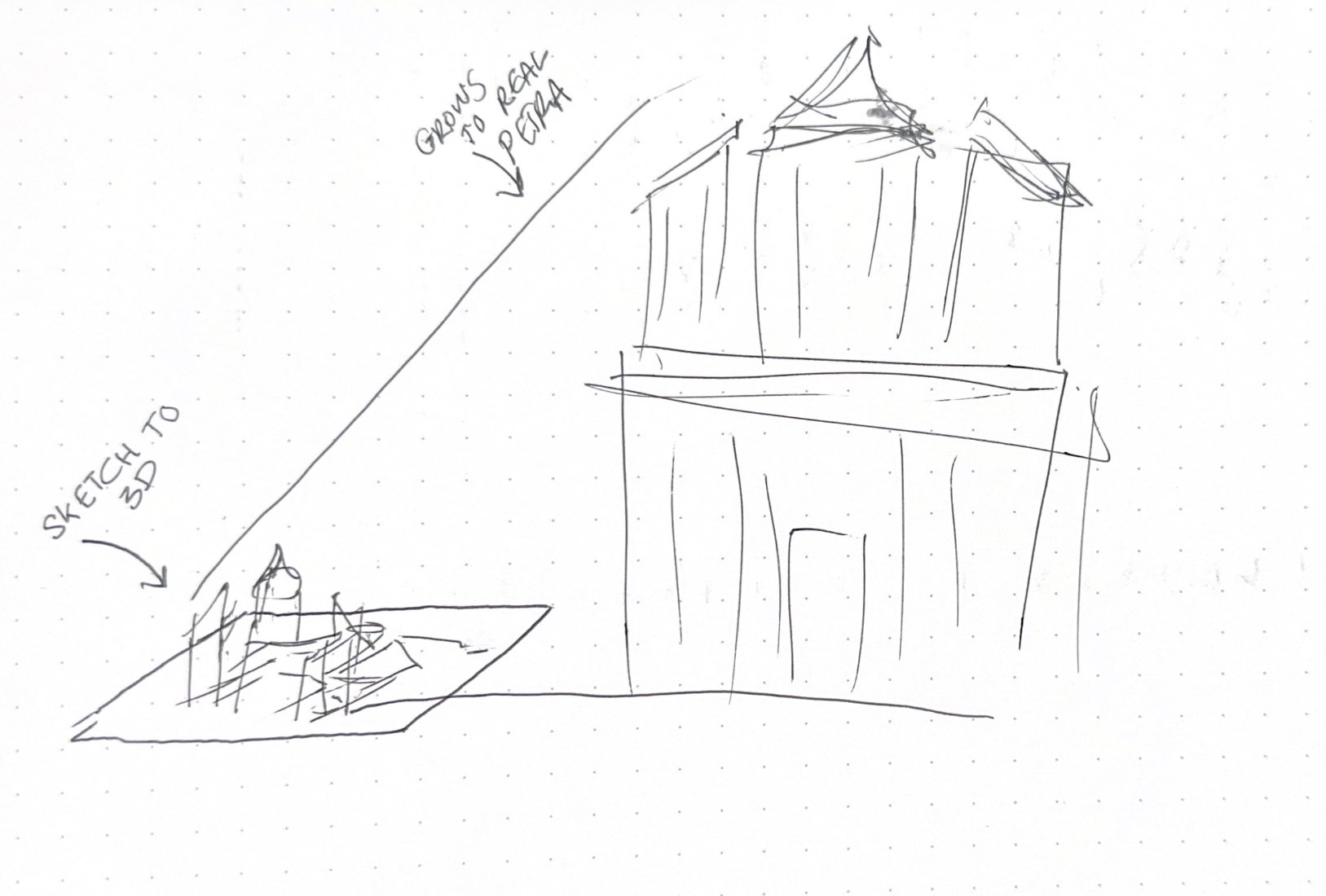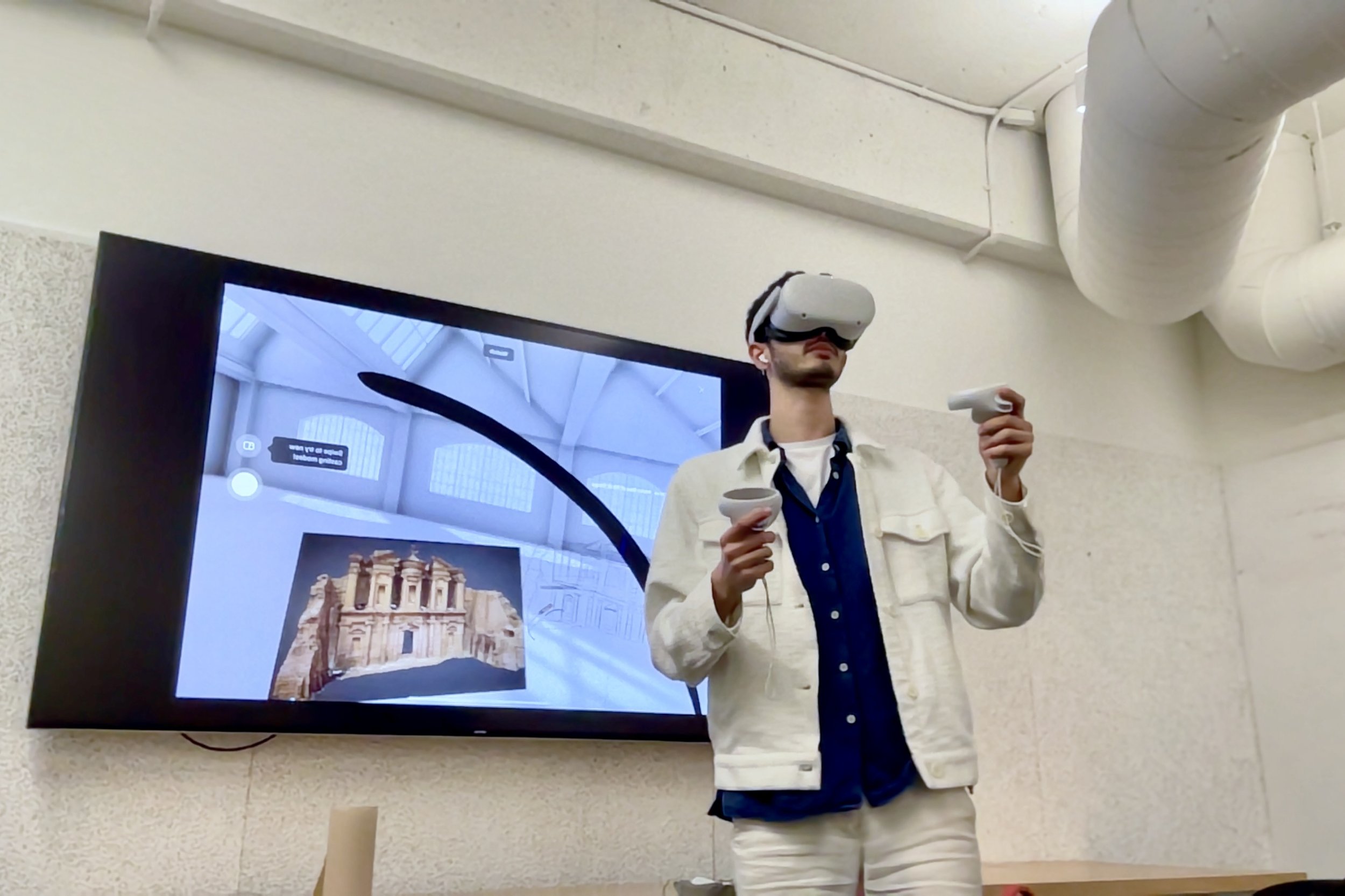Enchanted Petra: An AR Escape
A mesmerizing AR journey to Petra's Monastery, combining hand-drawn art, 3D models, and immersive features for a tranquil experience.
My Contribution
As the sole creator on this exploration, I worked on the project from start to finish, from learning blender, scanning, and developing the AR experience. I worked closely with my professor to make sure the design process stays on track.
Collaborators
1x Designers (Abed Darwazeh)
1x Instructor (Dave Elfving)
An AR Garden
My goal for this project was to create an immersive and captivating space using Augmented Reality
Exploration & Learning
Scanning
To build this project, I first had to familiarize myself with all the softwares required for AR.
I started by 3D scanning objects, people, and spaces using Polycam
While exploring 3D scanning with Polycam, I navigated LiDAR vs. photo usage and tackled challenges in capturing details, eventually becoming more proficient in the process.
Converting Files
I used Reality Converter to work with different 3D file types like USDZ and GLB, making it easier to convert and combine assets.
Cleaning the Scans
I utilized Blender to refine and enhance my 3D scans, ensuring cleaner and more polished models for the AR experience.
While using Blender to refine my 3D scans, I encountered challenges and realized the need to rescan objects to capture more detail, improving the overall model quality.
Designing in 3D
As a first-time user of Reality Composer, I was able to create engaging 3D AR interactions without the need for coding, making the design process more accessible and user-friendly.
Experimenting with various anchor points, behaviors, and scenes in Reality Composer provided me with valuable insights and inspiration for my final Petra piece, enhancing the overall experience.
Project Development
The Concept
My concept involved a piece of paper featuring a sketch of Petra's Monastery, from which a 3D representation would emerge, gradually growing and transforming into the lifelike structure of the actual monument.
Thought Process
To create the AR experience of Petra, I decided to work backwards. I began by acquiring the 3D model of the Monastery, followed by designing a 3D 'sketch' using GravitySketch in VR. Lastly, I created a hand-drawn sketch of Petra on paper, setting the stage for the immersive AR journey.
Designing in VR
After finding the best 3D model of Petra, I took a screenshots of the model and uploaded them to an app called GravitySketch on a VR headset.
I used the photos as reference to attempt to draw line version in 3D. This process was challenging since I had never designed in 3D on a VR headset, but it felt rewarding once completed!
Anchor Point
For an anchor point, I traced a screenshot of the 3D model that I made in VR to make it look as seamless as possible
Old
Initially, I encountered issues with my anchor point in Reality Composer, as it led to lagging and incorrect placement of the 3D model. The anchor point's complexity, due to its location in a notebook with dotted paper, may have contributed to these difficulties.
New
I redrew the sketch with less lines, on a larger white paper, and I added a black boarder to help the software identify it. This anchor point worked far better than the initial one.
Scenes
Scene 1
In the first scene we see the 3D sketch emerging from the anchor point, as if the paper sketch is coming alive
Scene 2
Here we see the 3D sketch move back and grow to its full size. After testing, I decided to delay this scene to allow the audience to fully digest the first scene.
Scene 3
After the 3D sketch reaches it’s final size, the real Monastery fades in, matching the size and shape of the sketch, We then see the sketch move down and fade out
Scene 4
The last scene, showing a peaceful space behind the door, was inspired by users' curiosity after I noticed people tried to pass through the door. I made a calming area with ocean sounds to attract users and improve their experience.
End Result
Challenges
Developing an AR experience presented several challenges. The anchor point issue caused lagging and incorrect placement of the 3D model. Aligning the components' size and location proved time-consuming. Determining the appropriate scale, walking distance, and scene duration was crucial to avoid user disengagement. Overcoming these challenges ensured a seamless and immersive AR experience.
What Next?
My next steps would be refining the anchor point selection process to minimize lagging and improve 3D model placement. Combining all animations and transitions into a single scene will reduce software lag. Investing more time in testing and iterating on component size, location, and timing will optimize user engagement and prevent unnecessary interactions. Utilizing lessons learned and incorporating user feedback will enhance future AR experiences.

















